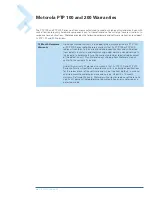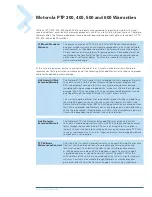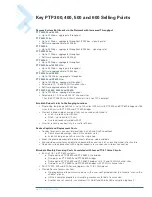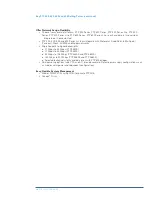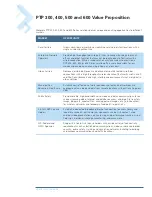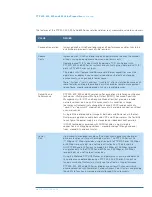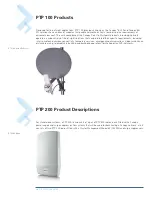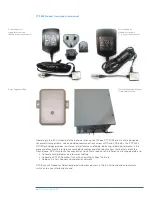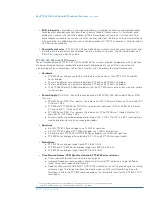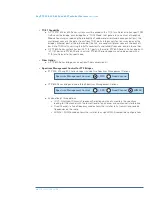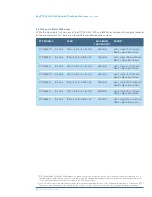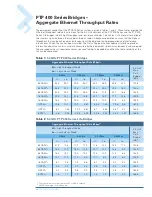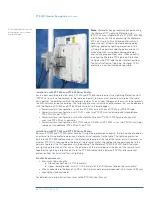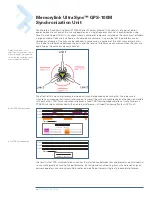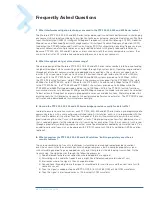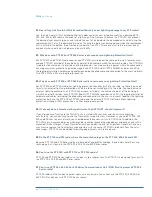
PTP SOLUTIONS GUIDE
4
•
T1/E1 Capability
>
A PTP 300, 400 or 500 Series system must be paired with a T1/E1 multiplexer to transport TDM
traffic over the bridge; each bridge has a “TDM Mode” that generates a new set of Adaptive
Modulation margins, reducing the probability of code-word errors (and hence packet loss); the
multiplexer converts the data stream from T1/E1 ports into packets for transmission over the
bridge’s Ethernet port; at the other end of the link, a second multiplexer converts the packets
back into TDM traffic, carrying the traffic seamlessly and reliably from one location to another
>
A PTP 600 Series system has built-in T1/E1 ports in the radio: PTP 600 Series Lite has one built-
in T1/E1 port and PTP 600 Series has two; PTP 600 Series bridges can also be paired with a
T1/E1 multiplexer to transport voice
•
Fiber Option
>
A PTP 600 Series bridge has an optional fiber conversion kit
•
Spectrum Management Control for pTp Bridges
>
PTP 300, 400 and 500 Series bridges include two Spectrum Management Options
>
PTP 600 Series bridges include three Spectrum Management Options
>
Explanation of three options:
•
i
-DFS –
Intelligent
Dynamic Frequency Selection continually monitors the spectrum
looking for the channel with the lowest level of on-channel and co-channel interference
• Fixed Channel – a fixed-frequency mode allows the installer to fix transmit and receive
frequencies on the radio
• WiMAX – WiMAX mode allows the installer to assign WiMAX-compatible configurations
Key pTp 300, 400, 500 and 600 Technical Features
continued
Spectrum Management Control
i_DFS
Fixed Channel
Spectrum Management Control
i_DFS
Fixed Channel
WiMAX

